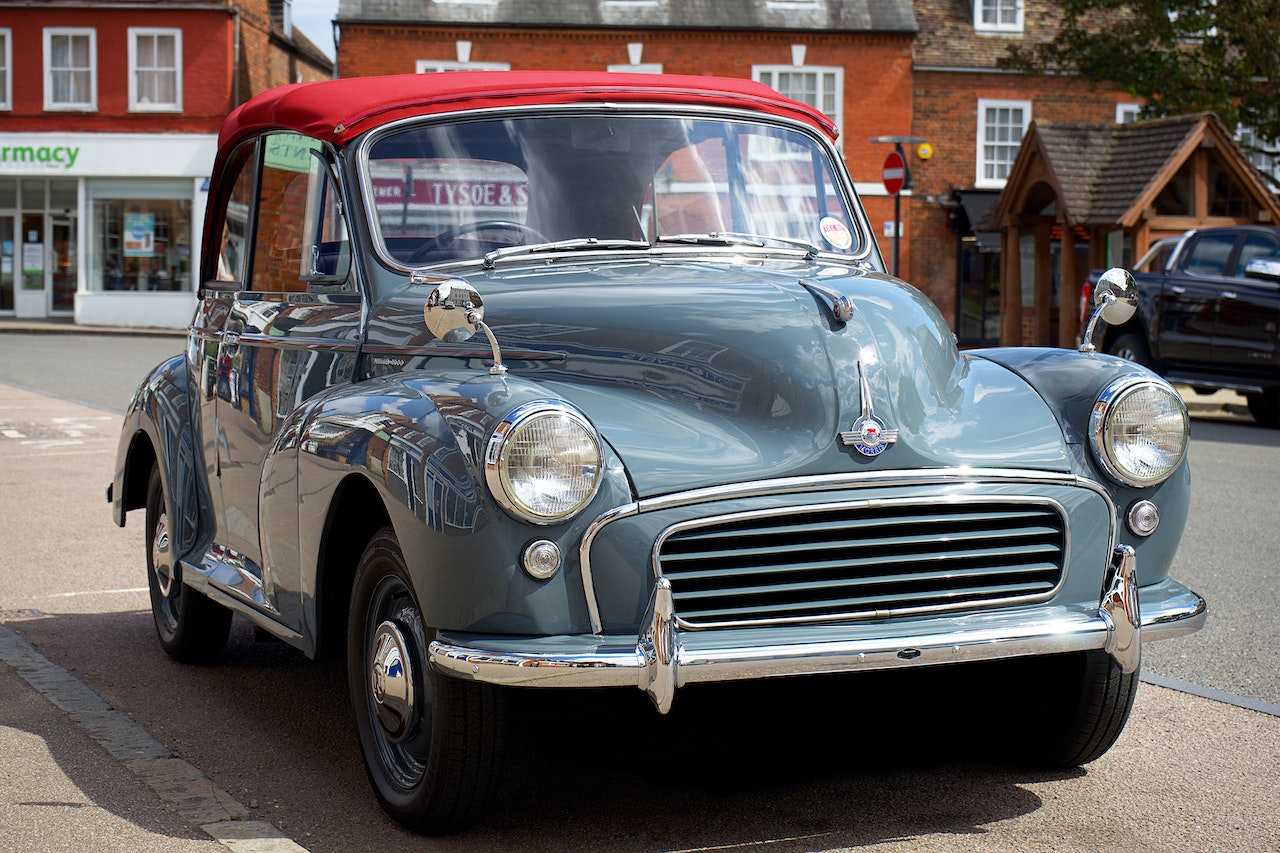Preserving the Past: A Guide to Vintage Car Restoration

Vintage cars hold a special place in the hearts of automotive enthusiasts. These mechanical marvels are not just means of transportation; they are rolling pieces of history that represent a bygone era of design, craftsmanship, and performance. Preserving and restoring these classic automobiles is a labor of love, as it allows us to relive the glory days of motoring while ensuring that these treasures endure for future generations. In this blog, we will delve into the art of vintage car restoration and provide a comprehensive guide to help you embark on this exciting journey.
Research and Planning:
To initiate the restoration of a vintage car, it is essential to engage in extensive research and strategic planning. Commence by carefully choosing the make and model of the vehicle you intend to restore. Delve into its historical background, production years, and any distinctive features or variations it may have. Endeavor to accumulate a wealth of information concerning the original specifications, available documentation, and technical resources pertaining to your selected automobile.
Assessing the Vehicle’s Condition:
Prior to embarking on the restoration process, it is vital to thoroughly evaluate the condition of the vehicle. Assess the state of the car’s body, chassis, engine, suspension, and interior to determine the extent of restoration needed. Pay close attention to signs of rust, dents, mechanical malfunctions, or any missing components. By conducting this comprehensive assessment, you will obtain valuable insights that will inform your restoration plan and budgetary considerations.
Creating a Restoration Plan:
Based on your assessment, create a detailed restoration plan that outlines the steps, timeline, and estimated budget for the project. Break down the restoration process into phases, such as bodywork, mechanical repairs, electrical systems, interior, and exterior finishing. This plan will serve as a roadmap throughout the restoration journey.
Finding Quality Parts and Resources:
Restoring vintage cars necessitates the acquisition of suitable parts and resources, which holds significant importance. It is often necessary to locate original components or opt for high-quality reproduction parts. It’s advisable to explore various avenues including specialized suppliers and online platforms. Some other good places to keep in mind are salvage yards and vintage car clubs. Engage with fellow enthusiasts, as they can offer valuable advice and share their own resources. Their insights and recommendations can be immensely valuable in your quest for top-notch parts, ensuring a successful vintage car restoration project.
Bodywork and Paint:
The bodywork and paint stage plays a vital role in restoring a vintage car to its former splendor. Begin by carefully removing all existing paint and reaching the bare metal, focusing on addressing any rust or corrosion problems that may be present. Dedicate ample time and effort to aligning body panels, mending dents, and creating a seamless surface. Select a paint system that matches the original specifications of the vehicle, and work diligently to attain a flawless finish. This phase requires meticulous attention to detail and a commitment to restoring the car’s aesthetic appeal.
Mechanical Overhaul:
The mechanical systems of a vintage car deserve meticulous attention. Rebuild the engine, transmission, and other critical components to ensure proper functioning. Pay close attention to the suspension, brakes, and steering, as these elements contribute to the car’s safety and performance. Seek the assistance of professionals or experienced mechanics if necessary.
Electrical Systems:
Restoring the electrical systems of a vintage car is a task that demands patience and meticulous attention to detail. It involves the careful replacement or repair of damaged wiring, switches, and gauges. It is crucial to thoroughly check and verify that all lights, indicators, and accessories are functioning correctly. Throughout the restoration process, referring to the vehicle’s wiring diagrams will serve as a valuable source of guidance. If you encounter complex electrical challenges, it is always wise to seek the expertise of professionals. By approaching the restoration of the electrical systems with precision and being willing to seek assistance when needed, you can ensure that your vintage car boasts a dependable and fully operational electrical setup.
Interior Restoration:
The interior of a vintage car is where craftsmanship and attention to detail shine. Upholster the seats, repair or replace the dashboard and door panels, and restore any vintage trim pieces. Recreate the original interior color scheme and use authentic materials whenever possible. Don’t forget to clean and restore the windows, windshield, and other glass components.
Finishing Touches:
As you near the end of the restoration journey, focus on the finishing touches. Install the emblems, badges, and trim pieces. Polish the exterior surfaces and apply a protective coating. Rebuild or refurbish the wheels, and select period-correct tires for an authentic look. Finally, document the restoration process with photographs and records to preserve its history.
Restoring a vintage car is a rewarding endeavor that requires patience, dedication, and a deep appreciation for automotive history. By following this comprehensive guide, you can embark on an enriching journey to preserve and revive these mechanical time capsules. Remember, the goal is not just to bring a vintage car back to life but to ensure that its legacy lives on for generations to come. Embrace the challenges, enjoy the process, and let your passion drive you towards preserving the past, one classic car at a time.
Sign Up to the SMS club TODAY!
Sign up to the Car Craze Central SMS Club today and don’t miss out on the latest automotive news. Sign Up Today and stay on top of auto trends!
